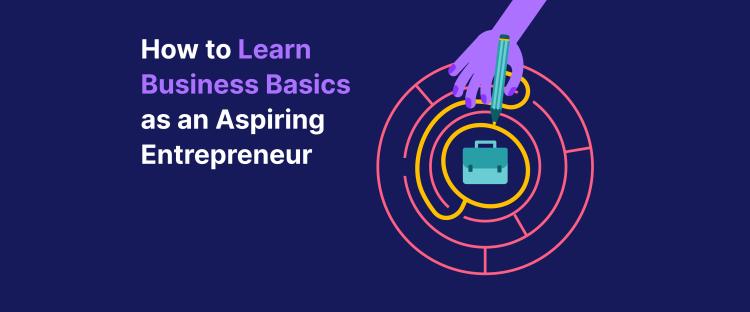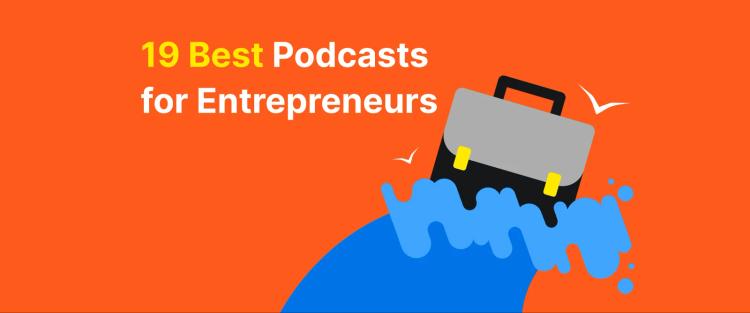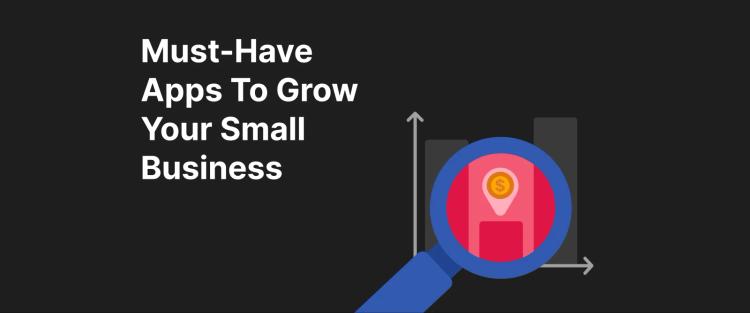Maybe you've got the business idea and even the drive — but where do you actually start? And how do you avoid becoming another statistic in the 20-23% of small businesses that fail in their first year?
Well, becoming an entrepreneur isn't about having a perfect plan or unlimited funding. It's about taking the right steps at the right time, learning from those who've walked this path before you, and building something that solves real problems for real people.
This guide shows you exactly how to become an entrepreneur through seven proven steps, backed by insights from bestselling books and real-world success stories. Whether you're leaving your day job or building something on the side, you'll discover what separates successful entrepreneurs from those who struggle.
And here's where Headway comes in. The most successful entrepreneurs are obsessive learners. They devour books like 'The Lean Startup' — but who has time to read cover-to-cover when you're building a business?
Headway gives you the key insights from bestselling business books in just 15 minutes. Smart entrepreneurs learn fast — Headway helps you do exactly that. Check it out for yourself!
Quick answer: How to become an entrepreneur
To become an entrepreneur, start by assessing whether you have the entrepreneurial mindset needed for success. Then identify a problem worth solving, develop your business idea through market research, and create a business plan.
Secure funding through angel investors, business loans, or bootstrapping, then launch a Minimum Viable Product (MVP) to test your concept. Success requires adaptability and hard work — plus the willingness to learn from mentors and iterate based on customer feedback.
Step 1: Figure out if entrepreneurship is really for you
Starting your own business sounds exciting. But before you quit your day job and dive in, you need to get honest with yourself about whether you've got what it takes.
Nearly 20-23% of new businesses fail within their first year, often because of poor planning and insufficient market research.
But the real reason many businesses fail? Aspiring entrepreneurs often jump in without understanding if they're genuinely built for the challenges, uncertainty, and hard work that define the entrepreneurial journey ahead.
📘 Discover your entrepreneurial strengths with Headway.
 Are you actually ready for entrepreneurship?
Are you actually ready for entrepreneurship?
Here's a simple self-assessment. Answer "yes" or "no" to these ten questions:
Do I genuinely enjoy problem-solving and finding creative solutions?
Am I comfortable with uncertainty, and can I take calculated risks?
Do I view setbacks as learning opportunities rather than failures?
Can I stay motivated without external validation or supervision?
Am I willing to invest time and money without immediate returns?
Can I make confident decisions with incomplete information?
Am I passionate about creating something that serves others?
Can I handle rejection and keep moving forward?
Am I ready to take full responsibility for both wins and losses?
Do I have a clear vision that drives me beyond just making money?
If you answered "yes" to at least seven questions, you likely have the foundation to succeed in entrepreneurship and build a thriving business. If you're uncertain about your fit or want to dig deeper into understanding your entrepreneurial potential, consider taking the IPIP-NEO Personality test and reading Forbes author Melinda Elmborg's article 'The Founder's DNA: Are You Wired For Startup Life?' for deeper insights into your entrepreneurial skills and mindset.
📘 Start your entrepreneurial journey with Headway.
Step 2: Choose the right path for your business
Once you're confident you've got the entrepreneurial mindset, it's time to figure out what kind of business you'll build. This isn't just about industry. It's about choosing a business model that fits your goals, resources, and lifestyle.
There are three main paths, and each requires different approaches to funding and growth.
Traditional small business
This path focuses on serving a local target market with steady demand. Think restaurants, consulting firms, retail shops, or service-based businesses. Small business owners typically fund their ventures through personal savings, business loans from lenders, or support from the Small Business Administration (SBA).
These businesses grow steadily rather than explosively. You're building something sustainable that generates consistent cash flow, serves your community, and gives you the freedom to be your own boss.
Tech startups
Startups focus on rapid scalability. They're built to grow fast and achieve massive valuations. Early-stage startups often seek angel investors to fuel rapid expansion.
This path demands different skills and carries a higher risk. But for entrepreneurs with groundbreaking ideas in technology, it offers the potential for extraordinary returns.
Social enterprises
These businesses address social or environmental problems while generating revenue. They can be structured as nonprofits, NGOs, or for-profit companies with social missions. Social entrepreneurs balance impact with financial sustainability, often relying on grants and innovative business models.
Three questions that will shape your path
1. Can you start with almost no money? Chris Guillebeau's 'The $100 Startup' proves you can. If your business idea aligns with your skills and solves real problems in your market, you don't need massive funding to begin. You just need a meaningful concept and the willingness to start small.
2. What makes your offering different? In 'Zero to One,' Peter Thiel warns against copying competitors. He challenges entrepreneurs to create something entirely new — to go from zero to one rather than from one to n, whether you're in tech or opening a local coffee shop, differentiation matters. What will make customers choose you?
3. How will you grow? 'The Lean Startup' by Eric Ries and 'The Hard Thing About Hard Things' by Ben Horowitz answer this question. Ries teaches lean innovation — building with minimal resources, testing with real customers, and adapting quickly. Horowitz prepares you for the tougher realities of scaling: managing teams, preserving cash flow, and making difficult decisions when everything feels like it's falling apart.
📘 Learn from successful entrepreneurs with Headway.
 Benefit from Eric Ries's expensive mistake
Benefit from Eric Ries's expensive mistake
Before Eric Ries became a bestselling author and successful entrepreneur, he learned a costly lesson with his first startup, Catalyst Recruiting.
Ries and his team spent months building what they thought was a perfect product. They invested time, money, and energy into features they assumed customers would love. They didn't test their assumptions. They didn't talk to potential customers. They just built.
When they finally launched, nobody wanted it. "We spent countless hours building a product that, when launched, nobody wanted," Ries admits in 'The Lean Startup.'
But this failure taught Ries the principles that would make IMVU a massive success. At IMVU, he started with a Minimum Viable Product (MVP) — a bare-bones version that let them test customer interest immediately. This approach allowed rapid iteration based on real feedback, avoiding unnecessary costs and features nobody cared about.
The result? IMVU grew rapidly, generating over $50 million in revenue and establishing Ries as an innovation leader.
Apply lean principles to your startup
The Lean methodology originated at Toyota to maximize efficiency and eliminate waste. It has since revolutionized how smart entrepreneurs build companies.
Key principles include Just-in-Time (JIT) production, which reduces inventory costs, and Kaizen, or continuous improvement, where everyone on your team contributes ideas to make things better.
Tools like Value Stream Mapping (VSM) help you analyze each step in your process to remove inefficiencies. Poka-Yoke introduces error-proofing mechanisms to prevent problems before they occur.
These principles apply whether you're manufacturing products, running an online business, or providing services. The core idea stays the same: eliminate waste, test assumptions, and improve continuously.
Step 3: Find a problem worth solving
Here's what most new entrepreneurs get wrong: they fall in love with their solution before confirming the problem actually exists or matters to their target market.
The best business ideas don't come from what you think is cool. They come from identifying genuine pain points that people will pay to solve.
Peter Thiel puts it perfectly in 'Zero to One':
The best projects are likely to be overlooked, not trumpeted by a crowd; the best problems to work on are often the ones nobody else even tries to solve.
Look at Airbnb. Brian Chesky and Joe Gebbia needed to cover rent, so they rented out an air mattress in their living room to conference attendees who couldn't find hotel rooms. That small experiment revealed a massive market need: affordable, unique accommodations that feel more personal than hotels.
Today, Airbnb generates over $10.5 billion annually and has facilitated over 1 billion guest stays. They succeeded because they identified a real problem and built a solution people actually wanted.
📘 Turn problems into opportunities with Headway.
 Three strategies for discovering business opportunities
Three strategies for discovering business opportunities
Spot hidden market needs
Venmo noticed that bank transfers were slow and impersonal. They created fast, social peer-to-peer payments with a feed where users could see and comment on transactions. This filled an unaddressed need, and Venmo now processes over $245 billion in payments annually.
What frustrates you in your daily life? What inefficiencies do you notice that others accept as normal? These observations often reveal opportunities traditional market research misses.
Leverage your unique skill set
Chris Guillebeau's 'The $100 Startup' encourages looking at your skills. Former scientist Pat Brown used his background to create Impossible Foods, producing plant-based meat alternatives that taste really good. The company now generates over $500 million in annual revenue.
Your skills give you an unfair advantage. If you're great at problem-solving, consider technical or process-improvement businesses. If you excel at communication, explore consulting, coaching, or content creation.
Think about a Minimum Viable Product
Eric Ries advocates starting with an MVP — a testable version of your product. Dropbox created a simple video demo before building complex software. That demo generated 75,000 signups in 24 hours, confirming demand before they invested heavily in development.
Today, Dropbox has over 700 million users and generates more than $2 billion annually. They succeeded because they validated assumptions with real data, not gut feelings.
This approach also helps when seeking funding. Potential investors and lenders strongly prefer entrepreneurs who test ideas and gather real customer feedback rather than relying on projections alone.
Step 4: Build these three essential skills
Starting a business requires more than a good idea. You need specific skills that help you adapt to change, recover from setbacks, and innovate continuously.
Adaptability
Eric Ries calls this the "pivot" — making strategic shifts based on real customer feedback rather than stubbornly sticking to your original plan.
Netflix demonstrates this perfectly. In 2007, they recognized the shift toward online content and pivoted from DVD rentals to streaming. Their subscriber base grew from 7.5 million to over 247 million globally.
Without that pivot, Netflix would likely have gone the way of Blockbuster. The lesson? Stay flexible and willing to change direction when markets shift.
📘 Develop adaptive thinking with Headway.
Resilience
Ben Horowitz's company Loudcloud nearly went bankrupt during the dot-com crash. Venture capital dried up. Cash flow became critical. Many would have given up.
But Horowitz's resilience led to a strategic pivot into cloud computing, rebranding as Opsware. HP acquired the company for $1.6 billion in 2007.
As Horowitz writes in 'The Hard Thing About Hard Things':
The most difficult skill I learned as CEO was to manage my own psychology.
When building a successful business, your mental toughness often matters more than your initial business plan. When things go wrong — and they will — your ability to maintain clarity determines whether you survive.
Innovation
Innovation doesn't always mean inventing entirely new categories. Sometimes it means offering better packaging, faster delivery, personalized service, or simply a better customer experience.
Apple demonstrates sustained innovation. By continuously launching groundbreaking products and improving them with new features, they grew from $8 billion in revenue in 2004 to $383 billion in 2023.
Look for ways to serve your target market better than anyone else. That's innovation that drives lasting competitive advantages.
Step 5: Create your business plan
The difference between dreamers and entrepreneurs? Entrepreneurs create actionable plans and execute consistently.
In 'The $100 Startup,' Chris Guillebeau advocates for simplified one-page business plans that cover the essentials: your mission, target audience, and funding needs.
Your business plan doesn't need 50 pages to be effective. Focus on answering critical questions: What problem does your business solve? What's your business model? Who are your customers? What marketing strategies will you use? What's your business structure?
📘 Build your business plan with Headway.
Don't spend too much. Launch with a Minimum Viable Product
Eric Ries's core advice: launch quickly with an MVP, gather feedback, and improve based on real customer input.
Many new entrepreneurs waste months perfecting products in isolation, only to discover the market doesn't value their "perfect" solution. Smart business owners test early and often, learning from real-world feedback rather than assumptions.
This iterative approach reduces risk and helps you allocate resources efficiently. You build what customers actually want, not what you think they want.
 Explore your funding options
Explore your funding options
To attract angel investors or secure venture capital, demonstrate a clear market advantage and a working business model. Peter Thiel's 'Zero to One' emphasizes that potential investors want proof you understand your market and know how to scale.
Consider multiple funding sources: personal savings (bootstrapping), friends and family, crowdfunding, business loans from lenders, or grant programs. Each option involves trade-offs in control, expectations, and repayment obligations.
The Small Business Administration (SBA) offers government-backed business loans with favorable terms for small business owners. These can be excellent options if you meet the qualifications.
Step 6: Navigate the funding challenge
Securing funding is one of the hardest parts of starting a business, especially for early-stage startups without proven traction.
Organizations like Y Combinator, Techstars, and 500 Global offer both capital and mentorship. But their acceptance rates sit below 3%. Most applicants face multiple rejections.
Here's the encouraging truth: you're not alone.
Brian Chesky (Airbnb) received dozens of rejections from investors who couldn't understand why anyone would stay in a stranger's home. Tim Westergren (Pandora) heard "no" over 300 times before securing funding. Howard Schultz (Starbucks) was rejected 217 times while raising funds.
📘 Master fundraising strategies with Headway.
Each rejection teaches you something about communicating your value more effectively. Stay determined. Refine your pitch. With each "no," you grow closer to finding the support that brings your vision to life.
Beyond traditional funding, creative entrepreneurs find alternative paths. Try pre-selling products, offering services before building products, or using social media to build audiences that fund development through crowdfunding.
LinkedIn can be valuable for connecting with potential investors and mentors in your industry. Building genuine relationships often matters more than having a perfect pitch deck.
 Step 7: Prepare for the real challenges of entrepreneurship
Step 7: Prepare for the real challenges of entrepreneurship
Entrepreneurship comes with inevitable hurdles: market competition, self-doubt, burnout, and constant pressure to manage cash flow.
Understanding these challenges beforehand helps you build systems and mindsets to handle them effectively.
Avoid crowded markets
Peter Thiel's 'Zero to One' advises building businesses with unique value propositions instead of competing in saturated markets. When you enter crowded spaces, you're forced to compete primarily on price, which erodes margins and makes sustainability nearly impossible.
Look for markets where you can be distinctly better at serving a specific niche where customers have no real alternative. This positioning gives you pricing power and customer loyalty.
Manage self-doubt and imposter syndrome
Many entrepreneurs — both new and experienced — face imposter syndrome. Ben Horowitz encourages learning to manage self-doubt and dealing with burnout proactively.
A 2023 Work in America survey found that 77% of US professionals experienced work-related stress, with 57% reporting emotional exhaustion and lack of motivation. Entrepreneurship intensifies these challenges since you're responsible for everything.
 Five self-care rules every entrepreneur needs
Five self-care rules every entrepreneur needs
Set boundaries between work and personal time. Working 16-hour days isn't sustainable and often isn't even productive beyond a certain point.
Take regular breaks throughout the day since they are essential for mental recovery and productivity. Your best ideas often come when you step away from work.
Build a support network of mentors, peers, and fellow entrepreneurs who understand your challenges. Consider joining local groups, participating in startup podcasts for inspiration, or finding a co-founder who complements your skill set.
Focus on small goals that show tangible progress. Instead of "build a million-dollar company," focus on "acquire 10 paying customers this month." These concrete targets give you clear direction and regular wins.
Maintain physical health through regular exercise, sufficient sleep, and balanced nutrition. Your health is your greatest asset as an entrepreneur. Without it, everything else becomes exponentially harder.
📘 Protect your wellbeing with Headway.
Turn your entrepreneurial dream into reality with Headway
You've learned the seven essential steps for how to become an entrepreneur. You understand what successful business owners do differently. You know the common pitfalls to avoid.
But here's what separates people who actually build successful businesses from those who just keep planning: consistent action backed by continuous learning.
Headway gives you the entrepreneurial knowledge you need without overwhelming your schedule. Get actionable insights from bestsellers like 'The Lean Startup,' 'Zero to One,' 'The $100 Startup,' and 'The Hard Thing About Hard Things' in just 15 minutes per day.
 Whether you're commuting, taking a break, or winding down before bed, Headway fits learning into your busiest days. You'll build the knowledge foundation that helps you make better decisions, avoid costly mistakes, and grow sustainable businesses.
Whether you're commuting, taking a break, or winding down before bed, Headway fits learning into your busiest days. You'll build the knowledge foundation that helps you make better decisions, avoid costly mistakes, and grow sustainable businesses.
Stop waiting for the "perfect moment" to start. The perfect moment is now — and Headway gives you the tools to succeed.
Download Headway today to turn your business idea into reality with proven strategies from the world's top entrepreneurs.
Frequently asked questions about becoming an entrepreneur
How to become an entrepreneur in 2025?
Start by identifying a problem people actually need solved. Test your idea with an MVP before investing heavily. Focus on building skills like adaptability and resilience. You don't need a perfect plan — just start small, learn from real customers, and adjust as you go. Action beats perfection every time.
Can a 12-year-old start a business?
Absolutely! Age doesn't determine your potential. Kids have started businesses like dog-walking services, tutoring, or selling handmade crafts. You'll need parental support for legal stuff and financial decisions, but you can start with something you're passionate about, keep it simple, and focus on solving problems for people around you.
How to become an entrepreneur without money
Start with what you already have: your skills and knowledge. Offer services like consulting, freelancing, or coaching before building products. Chris Guillebeau's 'The $100 Startup' proves you can launch with almost nothing. Pre-sell your idea, bootstrap with sweat equity, and reinvest early profits. Resourcefulness beats capital.
Is $1000 enough to start a business?
For many businesses, yes! $1,000 can cover a basic website, initial marketing, and essential tools for service-based or online businesses. The key is starting lean — test your idea before scaling. Focus on businesses with low overhead and quick customer validation. Your resourcefulness and execution matter more than your starting budget.
Can I start a business with $0?
You can! Start with service-based businesses using skills you already have — consulting, freelance writing, virtual assistance, or tutoring. Use free tools for your website and social media marketing. The 'sweat equity' you invest replaces cash. Build credibility, gather testimonials, then reinvest your first earnings into growth. Time trumps money initially.
What is the 50 100 500 rule startup?
This guideline suggests you need 50 conversations with potential customers to get 100 interested prospects, leading to 500 meaningful interactions before finding product-market fit. It's about validating your idea through real customer feedback early and often.
What's the easiest business to start with no money?
Service-based businesses requiring only your existing skills: freelance writing, graphic design, virtual assistance, tutoring, pet-sitting, or social media management. You need zero inventory and minimal overhead. Start by offering your services to people in your network, build testimonials, then expand. Your expertise is your product — monetize it immediately.









